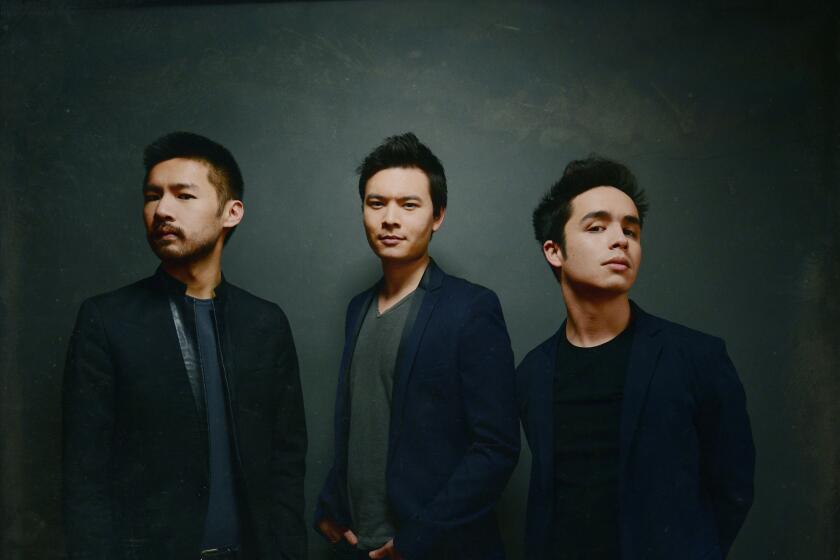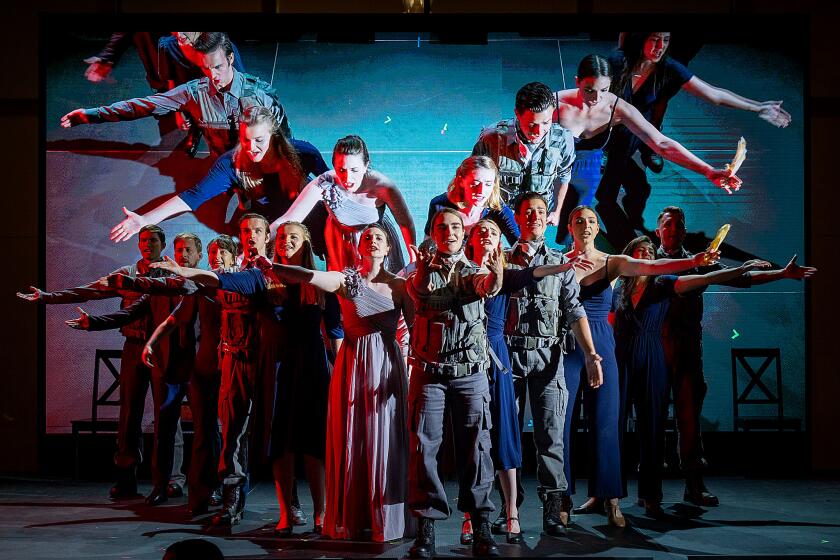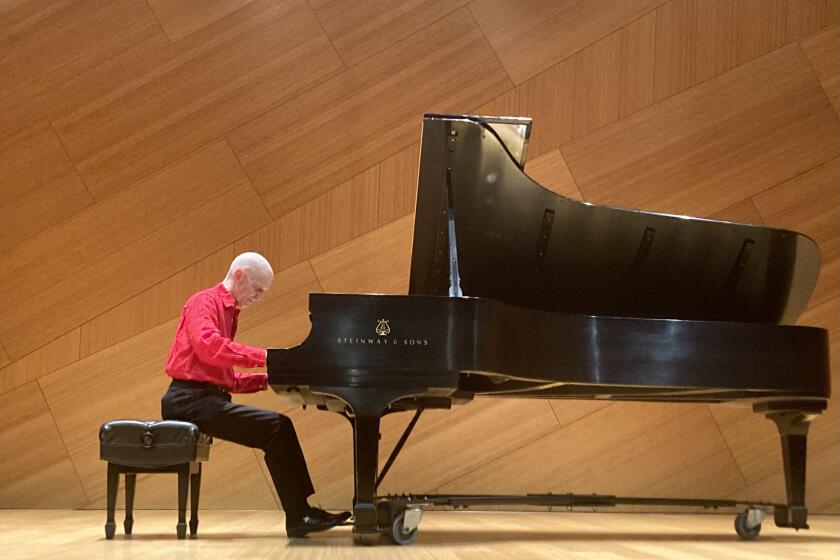Violinist Augustin Hadelich set for SD Symphony debut
After somber Britten concerto, violinist looks forward to playing Mozart’s ‘hsppy’ No. 5
San Diego Symphony Jacobs Masterworks
When: 7:30 tonight; 8 p.m. Saturday
Where: Copley Symphony Hall, 750 B St., downtown
Admission: $20-$96
Phone: (619) 235-0804
Online:
San Diego Symphony Chamber Music Series
When: 7:30 p.m. Tuesday
Where: The Neurosciences Institute, 10640 John Jay Hopkins Drive, La Jolla
Admission: $30
Phone: (619) 235-0804
Online:
Violinist Augustin Hadelich has several reasons to be happy about coming to San Diego this week. For one thing, he thinks the weather will be better here than in his home base of New York. But he lists other factors.
“I’m looking forward to working with the San Diego Symphony for the first time,” said Hadelich, 27, who performs at Copley Symphony Hall tonight and Saturday. “When I first came to Juilliard eight years ago, I was playing in the orchestra when (current San Diego Symphony music director) Jahja Ling guest-conducted. He probably doesn’t know we met before, but I remember him very well. I’m excited to work with him.”
Speaking from Birmingham, Ala., where he was performing the Britten Concerto, Hadelich said the repertoire in San Diego is a welcome change.
“The Britten Concerto is very exciting. Its inspiration was World War II, so it’s very painful. It couldn’t be more different from what I’m playing in San Diego. The Mozart Violin Concerto No. 5 is happy and full of vitality.
“I always like change — how different styles make you feel. It’s too much to play one thing over and over. Britten is a very sad piece. But Mozart No. 5 has been one of my favorites for years.”
Born in Italy to a German farming family, Hadelich knows firsthand that music’s emotional swings reflect life. Taught mainly by his amateur violinist father -- and tutored occasionally by musicians who visited Tuscany -- the youngster showed much promise. But at 15, a fire on the farm caused serious burns on his upper body, including on his right hand and arm. After almost two years of rehabilitation, Hadelich again set his sights on being a professional violinist.
With Juilliard diplomas and international awards under his belt, Hadelich now enjoys a busy touring schedule. While here, he will play Mendelssohn’s Octet at the Neurosciences Institute on Tuesday and visit the San Diego Young Artists Symphony at Mesa College on Saturday.
“I’m often very touched by the enthusiasm and love of music that I see in young musicians,” said Hadelich, who is often hailed for his raw emotion while playing.
“You have to be a perfectionist when practicing. Then you have to let go of it on the stage. You want to get everything right, but that could sound safe and not as alive. It’s important to stop worrying and to feel the spirit of the piece. To give a satisfying performance, you spend half your energy being perfect and half trying to forget about it. That’s the challenge.”
Augustin Hadelich on Mozart Violin Concerto No. 5
“Mozart wrote five concertos at 19. I’ve been amazed at how much he did in one year. The fifth one is the largest, longest and most virtuosic. It’s very lyrical and beautiful. With the different themes, it’s hard not to imagine characters — like an opera.
“The last movement is civilized and elegant, but suddenly he puts in an interlude of a wild Turkish dance. It couldn’t be a bigger contrast to the movement. It’s not really Turkish — it’s what Mozart thought was Turkish music. But you hit it with the wooden part of the bow, not the hair, which was uncommon then. Then it goes back to the main musical theme like nothing has happened. It’s quite humorous. It’s a very fun section.”
“I will play cadenzas I wrote for this concerto – which I love. I had fun when I wrote them, about three years ago. There is already humor in the piece. The harmonic modulations are a little funny and slightly theatrical. The tricky part is that the form and balance in Mozart is so perfect. I would ask myself why I was writing something that could mess that up.
"In a way, it is a never ending project. I add and cut things out often. I like the cadenzas because it makes the music more personal and shows something about my approach to it. Writing cadenzas is an opportunity to comment on a part of the piece. It opens up a lot of possibilities. In the old days people improvised - until the early 20th century. It would be nice to go back to that practice, because each time you heard the piece by each performer, it was different.”
Augustin Hadelich on his instrument
"The Stradivarius I play now was made in 1723 and is on loan to me through the Stradivarius Society in Chicago. It is spectacular. I’m really happy with it - this season especially. I’ve gotten to know it and it’s amazing how there are more things to discover in a great instrument. From the audience’s point of view, it has a very beautiful, sweet sound that I think is very special. Maybe compared to the other, older one (a 1683 Strad), it projects better. The early ones were built in a different shape and have a smaller sound.
"It’s easier to travel with it than people think. You keep it with you at all times and store it in the overhead. I have a very good case with a humidifier so when I’m in a dry climate, it has humidity. Occasionally on a small regional jet, but I manage to get in on even with the smallest overhead. It’s not an issue, but people ask me about that a lot.
"I have cellist friends who buy another seat for their instrument. I can’t tell you how many times I’ve heard so many people joke with them: You should play the piccolo, ha ha ha. Imagine how many times they have heard that joke.
Augustin Hadelich on his career
"I feel very lucky with what I’m doing, playing with wonderful orchestras. But a lot of very good musicians and soloists are out there, so it’s fierce competition. I feel it in a positive way and audiences can hear wonderful music. It encourages people to think of interesting things to do musically and of fresh repertoire. I love what I’m doing but there are many great soloists out there. It’s not easy but it inspires me to be creative."
BETH WOOD
Get U-T Arts & Culture on Thursdays
A San Diego insider’s look at what talented artists are bringing to the stage, screen, galleries and more.
You may occasionally receive promotional content from the San Diego Union-Tribune.





